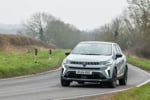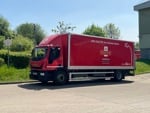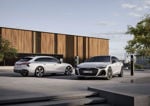Review
The timing of Subaru’s UK launch of the new Impreza couldn’t have been worse, coming just days after rally legend Colin McRae was killed in a helicopter crash.
Many credit McRae with single-handedly raising the profile of Subaru thanks to his wild driving style and world rally championship success behind the wheel of an Impreza.
And for many years Subaru has enjoyed the kudos of rallying success, transferring it to road-going versions of the cars that compete on the world stage.
But now the Japanese manufacturer is aiming to broaden the appeal of its Impreza range, having decided that the rally replica market has its limitations.
Which is why the new Impreza is a hatchback, rather than a saloon. The thinking at the firm is that more practical cars with four-wheel drive will underpin a bid to double sales in Britain over the next three years.
In place of the slightly awkward-looking saloon, Subaru has designed a hatchback which is conservative and European in its styling – it’s certainly less challenging to look at than other recent launches such as the Tribeca SUV.
Lawrence Good, managing director of Subaru UK, said: “We want to make a break from our traditional mould with models that have a broader base of appeal in the compact family car market while also offering distinct advantages over their rivals. Impreza will play a leading role in our growth as we aim to take this year’s sales of 7,300 units to 15,000 by 2010.
“But I don’t have any dizzy aspirations – I still want us to remain a niche player with a market share of less than 1%.”
Despite improved packaging, better operating economy and standard equipment claimed to be unbeatable in its class, the £12,495 lead-in Impreza 1.5R is £1,000 cheaper than the model it replaces.
Mr Good claims that hard bargaining by Midlands-based importer IM Group has produced “keenly competitive” prices throughout the eight-model range.
He added: “I believe the Impreza will become a serious purchase consideration with discerning lower-medium sector buyers who want something different to the Honda Civic, Volkswagen Golf or Mazda3. But the car will really start opening doors for us in the fleet market when it becomes available in diesel form next year.
“Not having diesel has resulted in a torrid time for our business over the last two years and it has cost us a lot of volume. That’s the reason why fleet currently accounts for only 12% of Subaru registrations.
“But making diesel available in the Legacy and Outback models next spring before having it in the Forester and Impreza will change our fortunes. We will finally get access to new market sectors and I believe it will double the Impreza volume to 5,000 units in 2009 and allow fleet to account for 20% of our business.”
Despite being shorter than its predecessor, the new car is wider and new multi-link rear suspension provides a boot capacity of 300 litres with the seats in position and 1,200 litres when the backrests are folded down.
Thanks to a longer wheelbase, bodywork overhang is reduced and legroom in the back is increased by two inches.
Subaru claims improvements to its traditional boxer engines in 1.5-litre and 2.0-litre guises have boosted power without harming fuel efficiency. Both units return 2mpg better economy.
Climate control, electric windows, rake and reach-adjust steering, fog lamps and a trip computer are included on the basic 1.5R model and the 2.0-litre R adds stability control, wiper de-icing, xenon headlamps and heated door mirrors.
In November a limited number of 2.5-litre WRX models offering 226bhp arrive as an appetiser to the WRX STi model with around 280bhp due next spring.
Behind the wheel
Subaru’s trademark flat-four engines are renowned for giving its cars a low centre of gravity that contributes to excellent road behaviour.
In their latest guise, both units are more refined and produce less of the characteristic growl under harsh acceleration than previous versions.
Higher gearing provides greater fuel economy at motorway cruising speeds.
But while the smaller 1.5-litre engine returns a creditable 37.7mpg on the combined cycle, it has lacklustre acceleration and needs to be revved hard to provide brisk progress.
The result of the revisions are best felt in the 2.0-litre Impreza, which has a snappier demeanour at all speeds while still managing to return 33.6mpg along with reduced exhaust emissions.
A distinctive dashboard layout that flows neatly into the centre console is attractive, while the quality build shows through with a damped glovebox lid and grab handles, and details like double-stitched upholstery and metallic interior trim.
As before, roadholding is impeccable and long-travel suspension gives all versions the compliant ride that makes light of long journeys.
Verdict
Subaru has finally realised that boy-racer business has its limitations and while anonymous exterior styling does the toned-down Impreza no favours at the kerbside, higher-powered versions remain satisfying to drive while also having wider market appeal.
Fact file
| Model: | 1.5 R | 2.0 R | 2.5 WRX | |||
| Max power (bhp/rpm): | 106/6,000 | 147/6,400 | 226/5,200 | |||
| Max torque (lb-ft/rpm): | 104/3,200 | 144/3,200 | 236/2,800 | |||
| Max speed (mph): | 109 | 120 | 130 | |||
| 0-62mph (secs): | 13.7 | 9.2 | 6.1 | |||
| Fuel consumption (mpg): | 37.7 | 33.6 | 27.2 | |||
| CO2 emissions (g/km): | 176 | 199 | 246 | |||
| On sale: | Now (WRX – November) | |||||
| Prices (OTR): | £12,495-£19,995 | |||||























